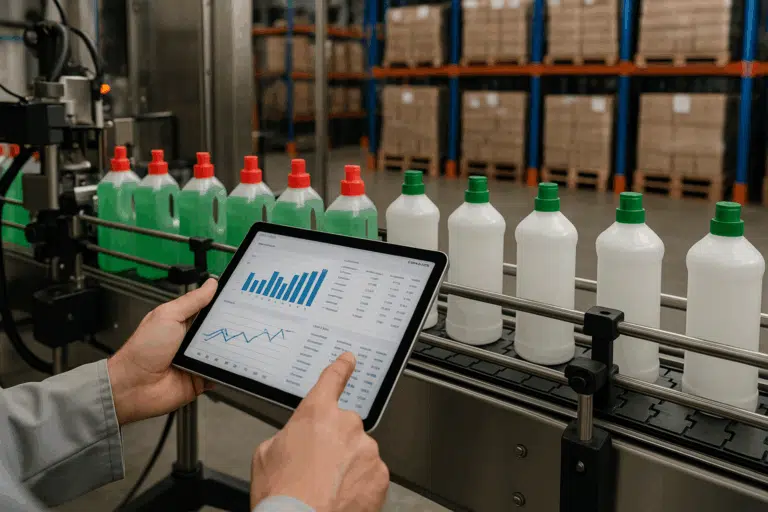If you’re a controller, supply chain financial manager, property managers, or an asset manager, you probably know how challenging to manage and track your fixed assets can become. From office equipment to production machinery, there are valuable assets that need to be tracked and managed properly for financial reporting, tax, operations, and regulatory compliance. One solution to this problem is to label each property asset with an Asset Tags for improved internal controls.
What Is an Asset Tag?
An asset tag is also known as “property asset tags” or “property ID tags”, and it is a label or a tag affixed to an asset that contains information, such as the asset description, asset number, company name, barcode or QR code. Asset tags can be made of various materials, such as metal, plastic, or paper. These can be affixed to assets in different ways including adhesive, tie-wraps, or screws. Implementing asset tags help organizations to track and manage their fixed assets in an effective asset management system.
By tagging your assets, you can quickly identify and locate them, which can save you time and resources. Asset tags also provide a means of tracking an asset’s lifecycle, from acquisition to disposal, and help you maintain an accurate inventory of your assets.


How Do Asset Tags Work?
Each asset tag come with an unique identifier as a barcode, QR code, serial number, or RFID chip. When an asset is tagged, the asset data is recorded in an fixed asset management system or in spreadsheets. To track an asset, you simply scan or enter the asset’s identifier into the fixed asset management system, which, in turn, the system displays the asset’s information, such as its existence, updated location, condition, and depreciation schedule.
RFID vs. Barcode: Which Asset Tag Technology Is Right for your Business?
Choosing between RFIDs or Barcodes asset tagging technology relies on whether your business is looking to automate or keep manual processes in inventorying and reconciling the physical asset inventory to the fixed asset accounting records.
What Is a RFID Asset Tag?
RFID (Radio Frequency Identification) is essentially a tracking technology that utilizes from radio frequency waves to identify assets. RFID asset tags are electronic labels that contain a RF microchip and antenna, which allows the scanning of multiple tags simultaneously, without any need for line-of-sight reading. Leading to automated inventory data collection and fixed asset register reconciliation, as well as reducing their related costs.
Below presents an RFID asset tag specifically designed for use on metal surfaces, with a scanning distance of up to 25-ft.

Source: www.mytechcodes.com
What Is a Barcode Asset Tag?
Barcode asset tags use a series of lines or bars of varying widths and spaces to represent data that can be scanned by a barcode reader. Barcode tags are less expensive than RFID tags, however, it needs a line-of-sight and manual data collection to be scanned. Making the asset inventory and reconciliation procedures more time-consuming and expensive, as there are needs for more labor resources.
Below presents a Barcode asset tag made out of aluminum material.

Source: www.mytechcodes.com
When deciding between RFID and barcode asset tags, consider the following factors:
- Efficiency: RFID tags are more durable than barcode tags and can be widely used in outdoor environments. RFID tags can be read from a distance, making them useful for large number of assets;
- Speed and Accuracy: RFID tags can be read more quickly and accurately than barcode tags, which is particularly useful for businesses that need to track large quantities of assets;
- Security: RFID tags can be more secure than barcode tags as they can be encrypted and more difficult to copy or duplicate.
Why You Need Asset Tags
Asset tags provide several benefits to an organization. Below presents a few reasons why you need asset tags in your fixed asset management system:
Improved Asset Visibility
Asset tags improve asset visibility by making it easier to identify and locate assets. By tagging your assets, you can quickly determine what assets you have, where they are located, and who is responsible for them. This can save you time and money by reducing the need for manual asset tracking and minimizing asset loss or theft.
Streamlined Fixed Asset Management Processes
Asset tags can help streamline fixed asset management processes by automating data collection and tracking. By using an asset tracking system, you can reduce the need for manual data entry and ensure that asset information is accurate and up-to-date. This can save you time and money by reducing the risk of errors and improving data integrity.
Improved Maintenance and Repair
Asset tags can help improve maintenance and repair processes by providing a means of tracking an asset’s maintenance history. By tracking maintenance and repair schedules, you can ensure that assets are properly serviced and maintained, which can extend their lifespan and reduce repair costs.
Reduced Asset Loss or Theft
Asset tags can help reduce the risk of asset loss or theft by making it easier to track assets. By knowing the location and status of assets, you can quickly identify any missing assets and take appropriate action. This can help you minimize losses and prevent theft.
Improved Regulatory Compliance
Asset tags can help improved compliance with accounting regulations and standards, such as US GAAP, IFRS, FASB ASC, etc. By tracking your fixed assets, you can ensure that your organization receive more accurate financial records, which promotes a cleansed and fortified fixed asset register for financial reporting, tax, and regulatory compliance. Avoiding audit risks and penalties.
Where to start if you think Asset Tagging can help
The most appropriate place to start is to reevaluate those business processes and internal controls you wish could be automated. For instance, one may choose to streamline Fixed Asset Management tasks with the implementation of RFID Asset Tagging systems to their facilities, plants, and departments. By integrating RFIDs with ERP Systems, firms eliminate manual data entry, individual scanning, data verification (reconciliation), and asset searching. As well as creating real-time visibility for Asset Tracking and Management operations.
CPCON has vast experience in guiding firms to business processes solutions and advanced RFID technology. So let us help you get started today.



























